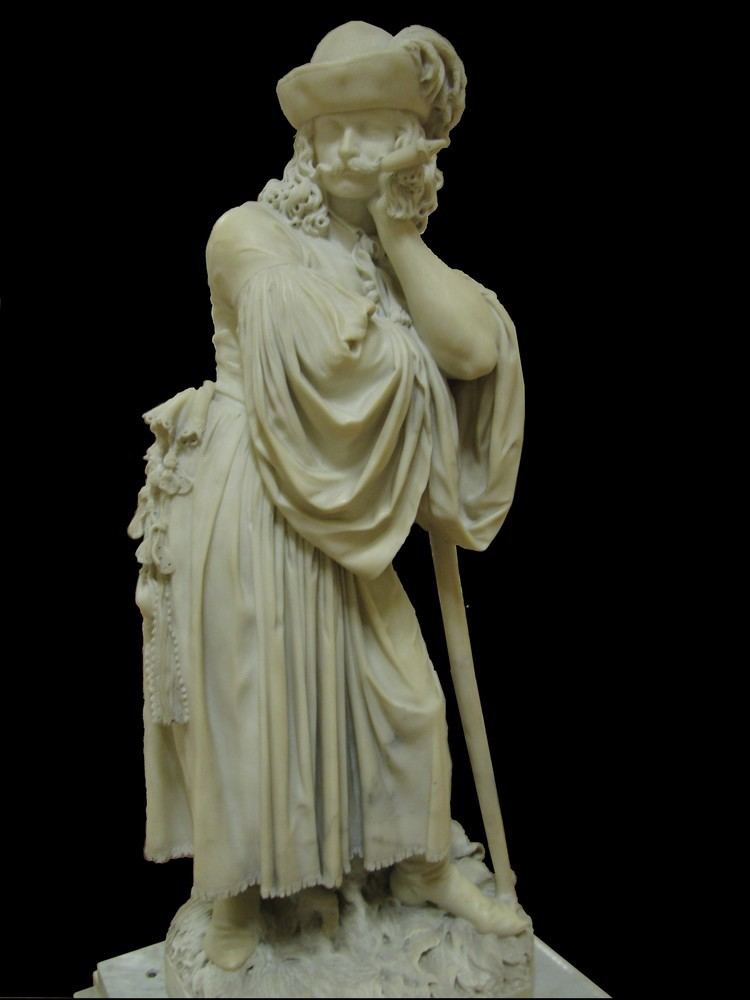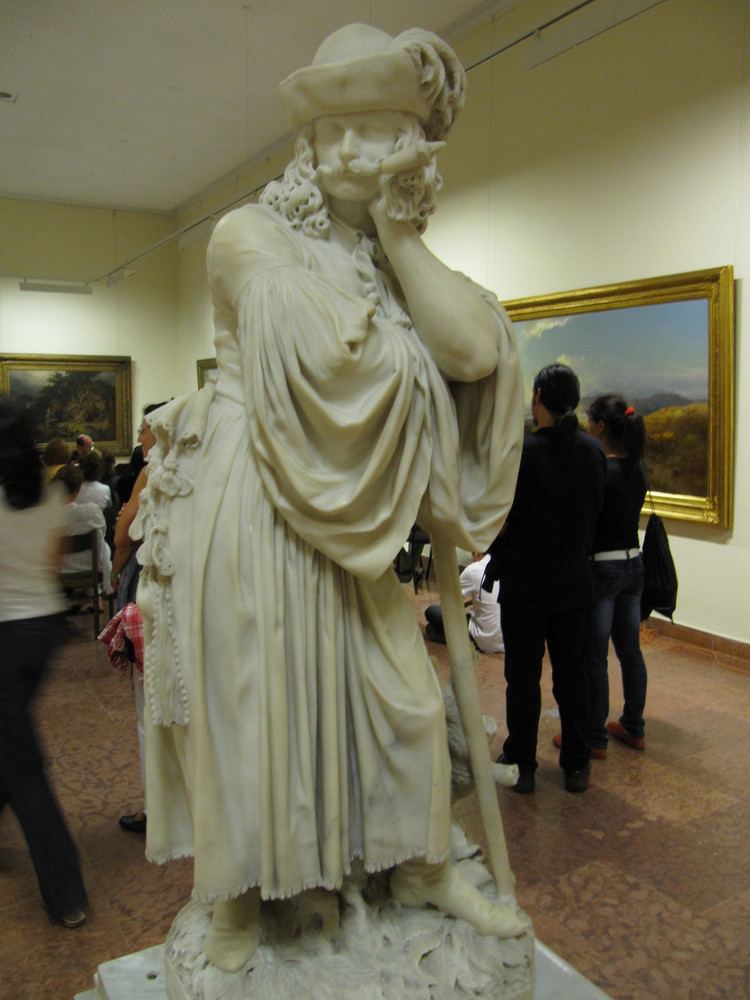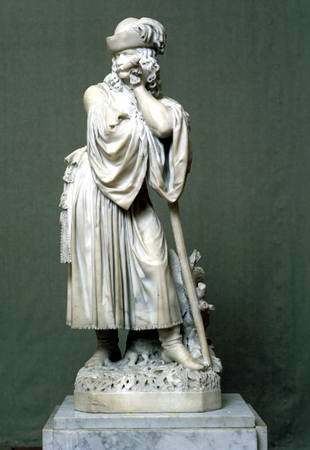Name Miklos Izso | ||
 | ||
Lego replica of the stolen sculpture of mikl s izs
Miklós Izsó (Hungarian: Izsó Miklós, German: Nikolaus Izsó; September 9, 1831, Disznós-Horvát (now "Izsófalva", Borsod-Abaúj-Zemplén County, north-east Hungary) - May 29, 1875, Budapest) was a Hungarian sculptor whose sculptural style integrated elements of classicism and academic style, being him the first sculptor attracted by life in the country ("Shepherd Playing the Flute"). His statue of "Grieving Shepherd" of the Munich period (1862) was critically praised throughout Austria.
Contents
- Lego replica of the stolen sculpture of mikl s izs
- Mikl s izs sculpture a t ncol paraszt
- Biography
- References

Mikl s izs sculpture a t ncol paraszt
Biography

Izsó studied at the College in Sárospatak from 1840. He took part in the Hungarian Revolution of 1848 and after the surrender at Világos, he lived in exile. He became a stone-cutter in Rima-Szombath (Slovak: Rimavská Sobota) from 1851 to 1856, where he was a pupil of István Ferenczy. He moved to Pesth in 1856.

Supported by young writers, artists and musicians, he travelled to Vienna where he worked under Meixner, then Gasser, both sculptors. From 1859 onwards he attended the Vienna Academy in Munich. On his return to Hungary in 1862, he modelled busts of contemporary personalities ("János Arany", "Béni Egressy", "Károly Megyeri", "András Fáy", "Kálmán D. Lisznyay" in 1863, "István Márton", "Pál Almási Balogh", "Károly Ghiczy", "Ilona Zrinyi" and "Ferenc Rákóczi II" in 1870).

He also modelled scenes from life in the country ("Gypsy Laokoon", 1862, "In the Spinnery", "The Drunkard", "Woman at Harvest", "Peasant Woman Carrying Food", 1863, and "Peasant Girl", 1864). He started modelling the statue of Csokonai in 1866 and completed it in 1867. It was his only statue erected. His miniature terracotta figures, his most famous works, date from 1864- 1870.

Izsó visited Italy in winter of 1868 and became a teacher at the School of Decorative Arts from 1871 onwards. However he died of tuberculosis in 1875 at the age of 44. His last works, the statue of Sándor Petőfi (Budapest) and the Dugonics Memorial (Szeged) were finished by Adolf Huszár.



